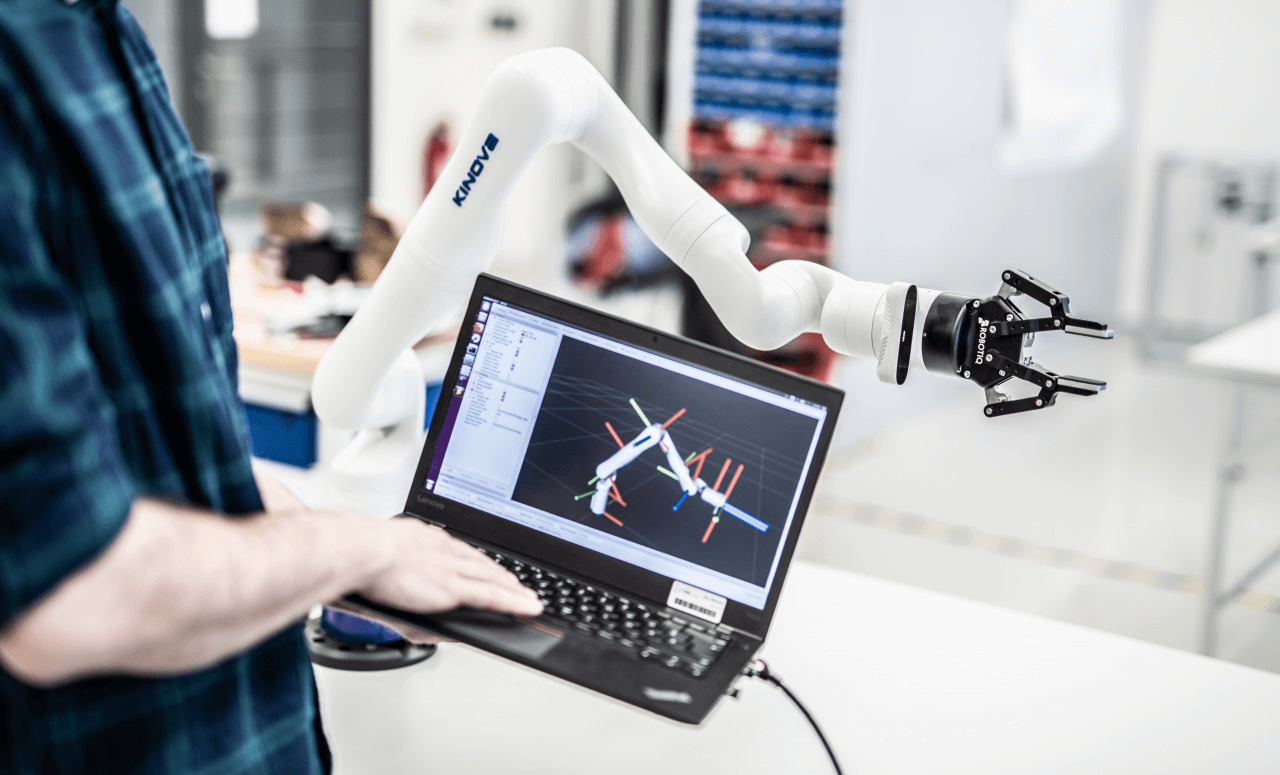Do we at ZAL GmbH have a new sporting hobby? No, we do not develop fishing robots. The inspiration for the title is old wisdom of the Chinese philosopher Confucius: “Give a man a fish and you feed him for a day. Teach a man to fish and you feed him for life.” A saying that can be applied more and more to modern automation technology, more precisely to robotics. Because with classic automation methods, processes and functions are programmed very strictly.
Today: The fish for the robot
A production line is thus adapted and optimized for a product. This means that a robot as part of this production line can insert a specific screw at a precisely defined position with the specified torque. The robot only has the necessary knowledge to perform this task. It knows where to find these screws and where they have to be screwed in. But he does not know what it means to screw something tight. Figuratively speaking, this screw is the fish for the robot.
But what if we change the shape or the position of the screw? The robot would have to be reprogrammed and this programming would have to be tested and optimized again on site. Programming robots for aviation applications is very time-consuming. This is due to the variable processes. Perhaps a work step was brought forward and now the robot is blocked by a part that is otherwise not there. If the robot shares its workspace with human colleagues, it has to pay special attention to this complex factor. So, such variant formations are often planned outside the production line. That means that someone carries out the tasks, who have no problems with this type of change – the human being.
At present, most industrial robot applications are well predictable. The integration of flexible, intelligent processes is also very challenging. In the context of Industry 4.0, thus, one needs robot systems that adapt to external uncertainties (intensity of light, dust, temperature fluctuations) and disturbances (missing parts, human intervention). And this without all these factors being explicitly defined in the process or the programming. How do we make this knowledge accessible to the robot?
Tomorrow: How does the robot learn to fish?
What if the robot has “knowledge” of the screwing principle right from the beginning of the planning? What if it independently learns a method to solve the problem “suitable screw for a suitable hole”? ZAL GmbH has taken up this challenge. Especially because aviation has a high and complex variety of products. Current advances in the field of AI, especially in deep learning, are omnipresent, e.g. in image recognition, speech recognition, or autonomous driving.
There are three approaches to the use of learning AI systems in robotics: First, one can use historical data to train AI models. Or secondly, one can generate virtual experience data to train AI models as well. Thirdly, there is reinforcing learning or deep reinforcement learning. Here, a virtual twin is allowed to learn by itself in a simulation based on a given aim function. The last two points are particularly important for robots to teach themselves digital automation solutions. The goal is to develop a method to use learning outcomes from simulations and virtual environments. In this way, experts can train real robots for a variety of manufacturing processes and MRO tasks in the aerospace industry.
What if robots learn to fish themselves?
The new technology has enormous potential: the rising manufacturing and maintenance costs (MRO) of the aerospace industry can be compensated. It also reduces barriers to the implementation of innovative aircraft concepts. One can integrate advanced materials more easily. Self-learning robots can also increase the degree of automation. Not only to reduce costs but also to improve quality and safety. And who knows, maybe some robots will teach themselves to fish.





